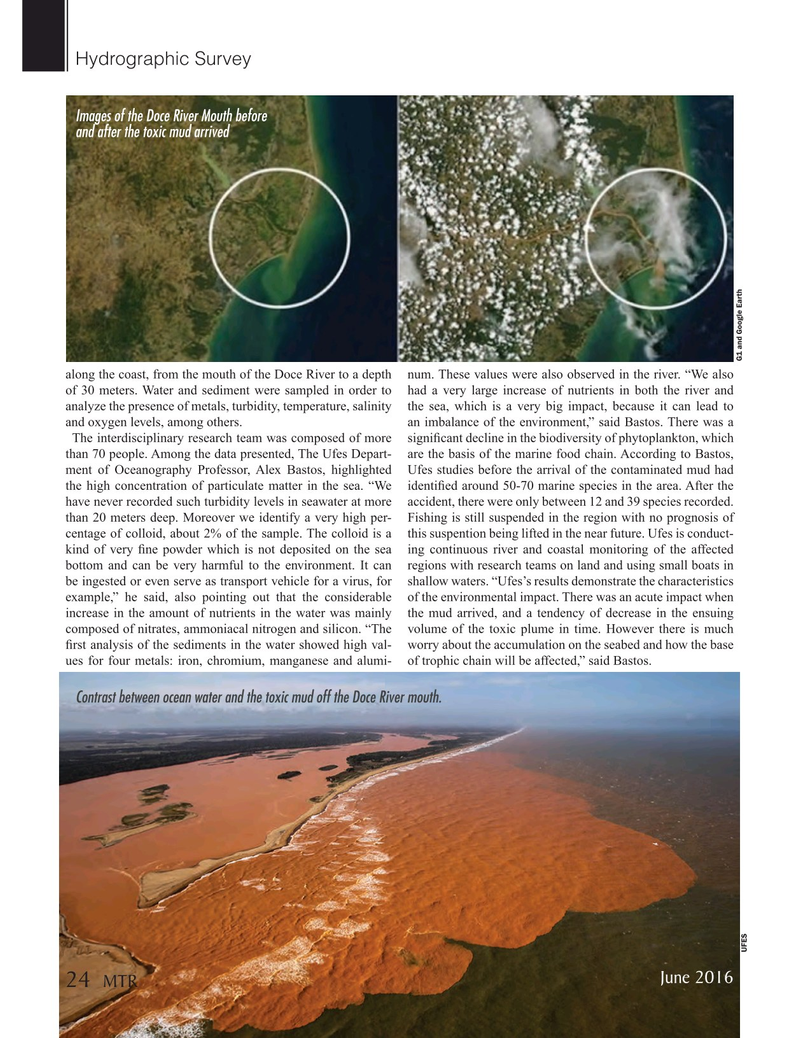
Page 24: of Marine Technology Magazine (June 2016)
Hydrographic Survey
Read this page in Pdf, Flash or Html5 edition of June 2016 Marine Technology Magazine
Hydrographic Survey
Images of the Doce River Mouth before and after the toxic mud arrived
G1 and Google Earth along the coast, from the mouth of the Doce River to a depth num. These values were also observed in the river. “We also of 30 meters. Water and sediment were sampled in order to had a very large increase of nutrients in both the river and analyze the presence of metals, turbidity, temperature, salinity the sea, which is a very big impact, because it can lead to and oxygen levels, among others. an imbalance of the environment,” said Bastos. There was a
The interdisciplinary research team was composed of more signi? cant decline in the biodiversity of phytoplankton, which than 70 people. Among the data presented, The Ufes Depart- are the basis of the marine food chain. According to Bastos, ment of Oceanography Professor, Alex Bastos, highlighted Ufes studies before the arrival of the contaminated mud had the high concentration of particulate matter in the sea. “We identi? ed around 50-70 marine species in the area. After the have never recorded such turbidity levels in seawater at more accident, there were only between 12 and 39 species recorded. than 20 meters deep. Moreover we identify a very high per- Fishing is still suspended in the region with no prognosis of centage of colloid, about 2% of the sample. The colloid is a this suspention being lifted in the near future. Ufes is conduct- kind of very ? ne powder which is not deposited on the sea ing continuous river and coastal monitoring of the affected bottom and can be very harmful to the environment. It can regions with research teams on land and using small boats in be ingested or even serve as transport vehicle for a virus, for shallow waters. “Ufes’s results demonstrate the characteristics example,” he said, also pointing out that the considerable of the environmental impact. There was an acute impact when increase in the amount of nutrients in the water was mainly the mud arrived, and a tendency of decrease in the ensuing composed of nitrates, ammoniacal nitrogen and silicon. “The volume of the toxic plume in time. However there is much ? rst analysis of the sediments in the water showed high val- worry about the accumulation on the seabed and how the base ues for four metals: iron, chromium, manganese and alumi- of trophic chain will be affected,” said Bastos.
Contrast between ocean water and the toxic mud off the Doce River mouth.
UFES
June 2016 24 MTR
MTR #5 (18-33).indd 24 6/1/2016 5:27:45 PM

 23
23

 25
25
